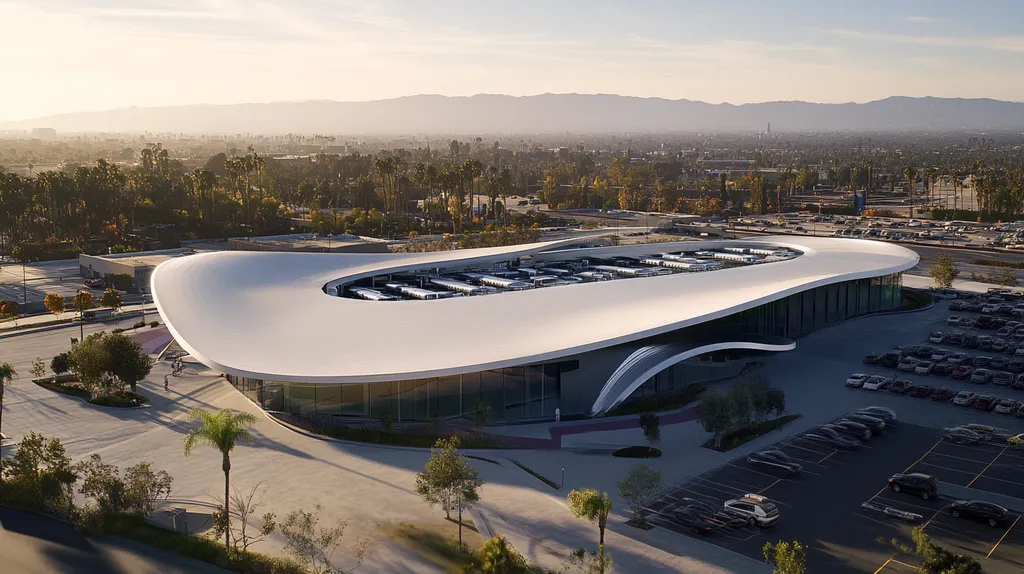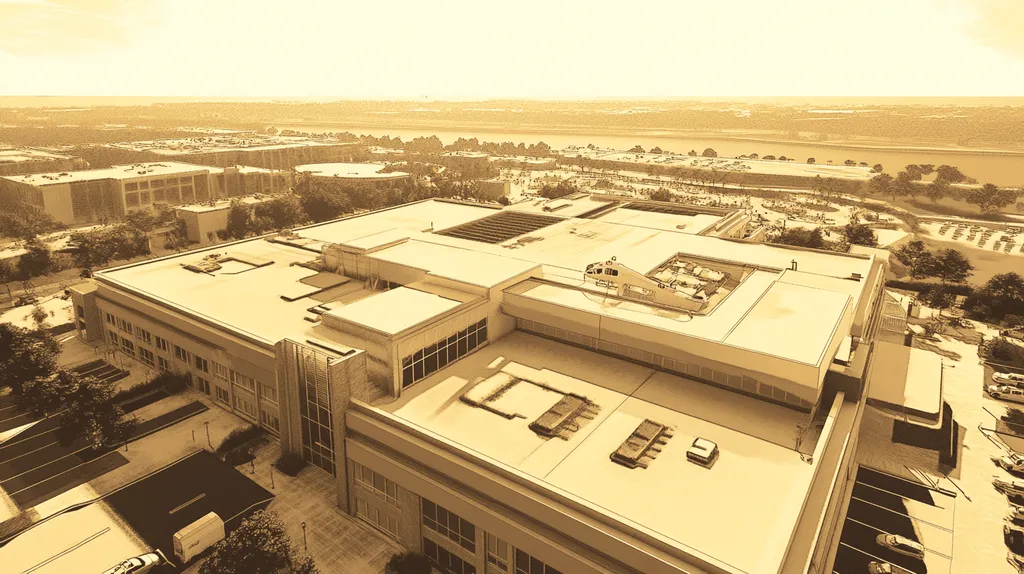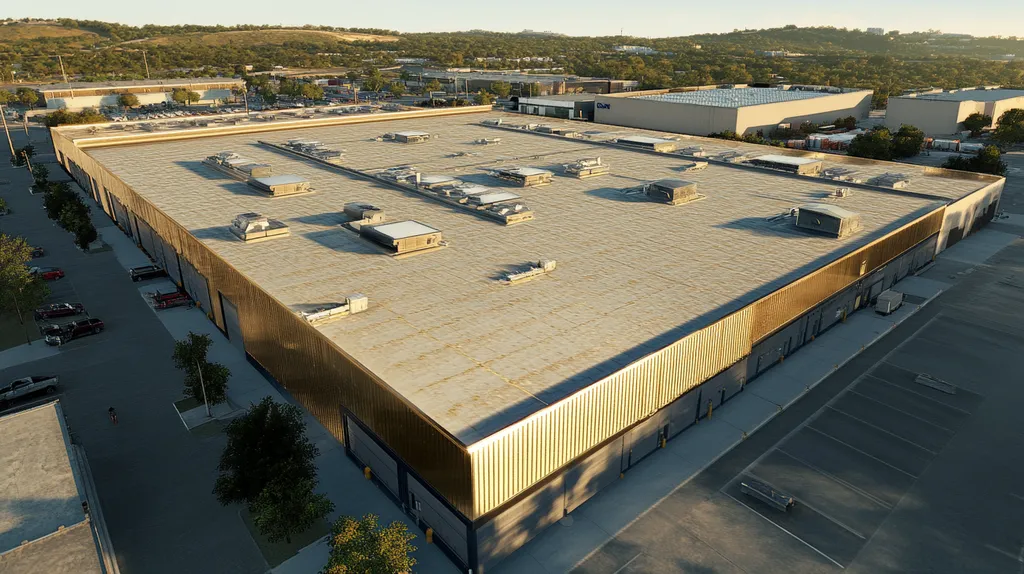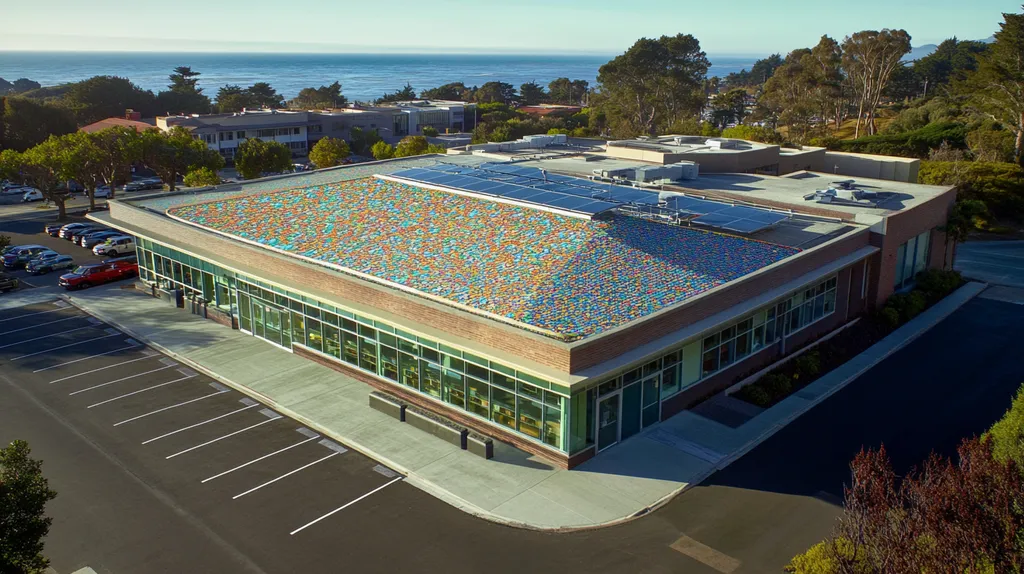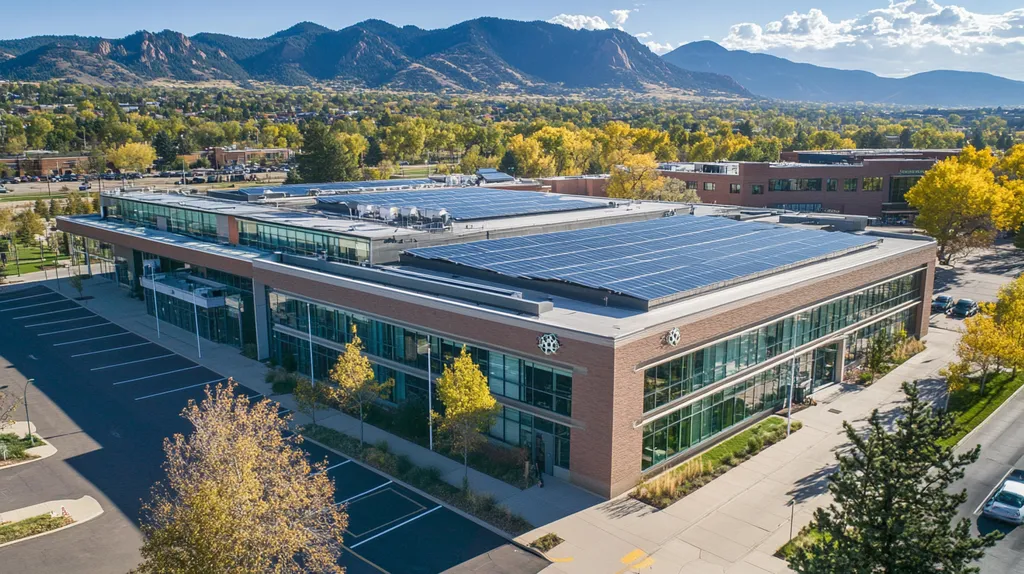When a non-compliance finding hits your commercial roof, the clock starts ticking. Studies show that over 40% of these disputes escalate into costly legal battles when not addressed properly within the first 30 days.
For property owners and facility managers, understanding how to effectively challenge these findings isn’t just helpful—it’s essential for protecting their substantial investments.
From documentation requirements to technical specifications, this comprehensive guide breaks down the critical elements of disputing roofing non-compliance, ensuring you’re equipped to defend your property’s interests with confidence.
SECTION 1: THE BASICS EXPLAINED
Non-compliance findings can bring serious headaches for commercial roofs, often resulting in hefty repairs or premature replacements. Shockingly, over 30% of roofing projects encounter compliance issues that pose risks to both safety and structural integrity. For property owners and facility managers, grasping the significance of these findings is essential for safeguarding their investments and ensuring their buildings run smoothly.
What It Is (In Plain Language)
Non-compliance findings occur when a roofing system fails to meet necessary industry standards or local building codes. This might stem from improper installation, material failures, or poor maintenance. Often, these issues come to light during standard inspections or when ownership of a property changes hands.
For example, imagine a roof that can’t adequately drain water, leading to puddles that could eventually cause leaks and promote mold growth—serious issues that can be prevented with strict adherence to compliance standards.
Furthermore, non-compliance may involve using unapproved materials or outdated technologies that don’t meet safety regulations. Neglecting these factors can turn what appears to be a minor rooftop issue into a significant liability for property owners.
Every non-compliance finding represents a potential risk, underscoring the importance of understanding these implications and ensuring roofing projects align with required standards.
Why It Matters (To Your Building)
Grasping the concept of non-compliance is crucial for preserving a building’s value and durability. Non-compliant roofs are prone to structural damage, which can erode property worth over time. A roof that flouts building standards may lead to costly repairs that could have been easily avoided with initial compliance.
Studies indicate that compliant buildings experience nearly 50% fewer unexpected maintenance costs. By investing in compliance, property owners not only protect their structures but can realize substantial savings in the long run.
Moreover, non-compliance can expose property owners to legal repercussions. If a non-compliant roof causes injuries, the ensuing lawsuits can escalate insurance premiums and disrupt business operations.
On a positive note, maintaining compliance enhances the credibility of property managers, fostering trust with tenants. A well-built, compliant roofing system reflects the overall quality and reliability of the building—a trait that can attract and retain renters.
How It Works
Disputing non-compliance findings follows a systematic approach. First, claimants need to pinpoint the specific issues raised against their roofing system, ranging from documentation discrepancies to observable roof conditions.
Next, property owners should compile supporting documentation such as installation records, photographs, and maintenance logs to back up their position. The success of resolving disputes often hinges on presenting a well-organized case that challenges inspection findings.
In certain scenarios, hiring an independent roofing consultant may be advantageous. This expert can offer an impartial evaluation that affirms or disputes the compliance claims—true gold during discussions with regulatory bodies or court hearings.
It’s also crucial to address non-compliance issues promptly; delays can worsen conditions or lead to hefty compliance penalties. Establishing routine inspections and continuous education about compliance standards are key to preventing future disputes.
SECTION 2: PRACTICAL APPLICATIONS
The stakes are incredibly high when it comes to disputing non-compliance findings on commercial roofs. A recent study uncovered that over 30% of commercial properties experienced inspection violations that could spiral into expensive legal battles. This section dives into the common scenarios where non-compliance issues pop up, critical moments when a dispute is essential, and the ways roofing systems work hand-in-hand with other building systems—all indispensable knowledge for property owners and facility managers looking to protect their investments.
Common Uses & Examples
Recognizing situations where non-compliance findings typically arise is crucial. For example, many roofs fail to align with local building codes due to improper installation—flat roofing systems often fall victim to this, especially when drainage isn’t prioritized.
Another frequent culprit involves roofing materials that don’t adhere to manufacturer specifications. Using non-approved materials can violate warranty conditions, complicating any future repairs or alterations. It’s like throwing a wrench in the gears—you may find yourself in a jam later!
Poor maintenance records can also trigger compliance headaches. Property owners need to maintain meticulous service histories to showcase their commitment to meeting regulatory standards and avoiding compliance traps.
Lastly, insufficient insulation can lead to energy compliance violations. Many states require energy-efficient roofing systems, making this a common source of contention and a potential pitfall in compliance efforts.
When You Need It Most
The ideal time to dispute non-compliance findings is right after an inspection. Addressing concerns early on helps avoid costly repercussions down the line. For instance, if a facility receives a non-compliance notice just before a scheduled roofing upgrade, immediate action is needed to clear up any confusion.
Timing is also paramount when lease agreements or warranties come into play. One finding of non-compliance can jeopardize ongoing contracts or limit your ability to make essential repairs without incurring additional fees.
Moreover, compliance violations can rear their heads unexpectedly during financial audits or insurance renewals. Consulting experts early ensures that any disputes can be resolved swiftly before they escalate into bigger issues.
In rapidly changing jurisdictions, keeping an eye on regulatory updates can equip property managers to identify compliance risks ahead of time. Early awareness allows proactive steps to tackle potential non-compliance challenges before they become a problem.
Interactions With Other Systems
A roofing system doesn’t operate in a vacuum; it interplays with multiple existing systems within a building. For instance, insufficient drainage from a roof can lead to fundamental foundation issues, ultimately compromising structural integrity and safety.
Mechanical systems, such as HVAC, depend on the roofing system for proper ventilation and energy efficiency. If non-compliance is found, adjustments to these interconnected systems may be required, leading to further complications.
The performance of the building envelope is another vital interaction. Non-compliant roofs can create air leaks, which affect heating and cooling efficiency while running afoul of energy codes.
Lastly, incompatibility with fire safety systems may pose significant risks. Non-compliant roofs can obstruct fire exits or fail to meet fire-retardant regulations, leading to hazardous conditions for occupants.
SECTION 3: KEY TERMINOLOGY DECODED
Navigating the world of roofing compliance demands a solid grasp of essential terminology. When property owners encounter non-compliance findings, misunderstandings about terms can lead to costly and frustrating disputes. For instance, misinterpreting terms like “flashing” or “dew point” could result in weak defenses against claims. This section aims to illuminate pivotal industry terms, making compliance discussions more straightforward and empowering for commercial property stakeholders.
Essential Terms Explained
In the roofing industry, terminology can be a maze. Take “thermal resistance,” for example. Measured in R-value, it reflects a material’s effectiveness at resisting heat flow. The higher the R-value, the better the insulation. A good grasp of this concept is crucial, as many properties face non-compliance penalties due to insufficient insulation.
Then there’s “drainage,” referring to the system that directs water away from the roofing structure. Effective drainage is vital for preventing water buildup, which can lead to severe roof damage. Understanding these terms empowers property owners to construct compelling arguments against non-compliance claims.
Industry Jargon Translated
The roofing sector is ripe with jargon that can bewilder those outside the field. Terms like “ballast,” “membrane,” and “substrate” frequently populate compliance documents. Ballast, for example, consists of heavy materials used to secure roofing membranes and protect against wind uplift—an asset property owners must consider during compliance evaluations.
The “membrane” serves as a waterproof barrier in roofing systems. Knowing the type of membrane used can be instrumental in addressing compliance issues. Lastly, the “substrate” is the foundation layer supporting all roofing components. Familiarity with these terms enables property owners to engage more effectively with contractors and regulators, facilitating clearer communication in compliance matters.
Measurement & Units Simplified
Accurate measurements are non-negotiable when it comes to roofing compliance. Key units include square feet and inches, essential for assessing the size of a roofing area against building codes. Errors in measurement can lead to significant repercussions, including compliance oversights.
Moreover, understanding how to measure slopes in ratios is critical for evaluating water drainage. A slope of 4:12, for instance, signifies a four-inch rise for every twelve inches horizontally. This detail is paramount in determining whether a roof effectively sheds water. Thus, honing in on these measurements equips property owners to robustly challenge non-compliance findings, protecting their valuable investments.
SECTION 4: DECISION FACTORS
When it comes to commercial roofing, understanding decision factors is crucial for effectively navigating compliance disputes. With roofing projects sometimes costing hundreds of thousands of dollars, each choice carries substantial ramifications for budgets and overall building performance. Property owners and facility managers face a maze of potential risks and rewards, where the right insights can lead to compliance success, while missteps can trigger costly disputes. Stakeholders must approach these decisions with comprehensive awareness and strategic foresight.
Cost Considerations
Budgeting is a top priority for property owners, making cost considerations essential in the face of non-compliance issues. Understanding the financial implications tied to compliance findings is vital; miscalculations can inflate project costs or leave budgets underprepared for unexpected repair needs. For example, a facility manager could underestimate repair expenses due to overlooked damages, ultimately affecting finances down the road.
Property owners must also balance the costs of immediate compliance against the potential for long-term financial burdens. While ignoring a compliance finding might seem cheaper initially, it could result in expensive legal conflicts or warranty claims that eat into profits. Conducting a thorough financial analysis can be a smart investment, saving money over the life of the roofing system.
Moreover, the choice of materials plays a significant role in cost dynamics. Opting for higher-quality, compliant materials might involve an upfront expense, but it often translates to lower maintenance and repair costs in the long run. This strategy not only protects budgets but also fosters compliance stability.
In summary, careful cost analysis is essential for making informed roofing decisions that uphold compliance while supporting financial health.
Performance Trade-offs
When confronted with compliance issues, stakeholders must weigh critical performance trade-offs. Decisions often depend on balancing immediate compliance demands with future performance expectations. It’s important to recognize that some compliant materials may not perform as well as traditional options, potentially leading to future complications.
For instance, if a facility opts for a synthetic roofing membrane to meet compliance, it may not withstand harsh weather as effectively as conventional materials. This could threaten the integrity of the building and lead to early repairs. Property owners need to assess how materials will hold up in their specific climates, as performance differences can influence compliance down the road.
Additionally, the insulation type chosen can significantly affect energy efficiency, a factor often tied to local regulations. Using inadequate or low-cost insulation can drive up energy bills, creating additional financial strain in the future. Thus, decision-makers should consider both the compliance implications and the long-term performance of insulation systems.
Ultimately, evaluating performance trade-offs means holding a dual focus on immediate compliance solutions while also ensuring they support enduring operational success.
Lifespan & Durability Factors
Considering lifespan and durability is essential in roofing system decisions, especially when resolving disputes. A roof that meets compliance standards today may not necessarily be effective years down the line, leading to added maintenance costs or even premature replacement. Stakeholders should examine how chosen materials will perform within the building’s specific climate and usage scenarios.
For example, roofing systems with shorter lifespans may require more frequent replacements, resulting in higher lifecycle costs and disrupting operations. On the flip side, investing in durable materials upfront can lead to significant savings by minimizing maintenance and replacement frequency.
Compliance with local building codes often correlates with anticipated lifespan expectations. Property owners need to be vigilant about how compliance impacts warranties and what that means for long-term durability. Understanding these relationships can guide investment strategies that ensure sustainable roofing solutions.
In conclusion, evaluating lifespan and durability alongside compliance findings is essential for making informed decisions that safeguard both assets and resources for the long haul.
SECTION 5: COMMON CHALLENGES
Navigating non-compliance findings in commercial roofing isn’t just important—it’s essential! Ignoring these issues can quickly escalate into financial setbacks, legal disputes, or declining property values. Alarmingly, around 30% of roofing projects grapple with compliance conflicts. By understanding the typical challenges that arise, property owners and facility managers can empower themselves to effectively dispute non-compliance findings. This section will delve into common problems, warning signals to be vigilant for, and proactive strategies to mitigate risks.
Frequent Problems & Solutions
A major hurdle in roofing disputes is often inadequate documentation. Without detailed roofing contracts, warranties, and inspection reports, property owners can find themselves in a tough spot when confronting non-compliance findings. Establishing a thorough documentation protocol from the outset can make all the difference. This ensures that every step is recorded and accessible when needed.
Another common issue stems from misinterpretations of building codes. Roofing professionals sometimes overlook these critical regulations, leading to costly compliance violations. To counteract this, it’s beneficial to hold regular training sessions focused on local building codes. Keeping roofing teams informed can help prevent these oversights.
Additionally, neglecting to hire qualified third-party inspectors can lead to grave misunderstandings about compliance. Engaging independent inspectors during key phases can catch compliance issues before they snowball. Their unbiased assessments add confidence that all work meets necessary standards.
Warning Signs To Watch For
Staying alert to warning signs can save property owners from major compliance headaches. One of the most apparent indicators is visible damage to roofing materials; this can signal deeper issues that, if ignored, could result in non-compliance notices. Such visible damage not only threatens the building’s integrity but might catalyze further inspection troubles.
Another red flag is pooling water or poor drainage on the roof. Accumulated moisture can lead to mold and structural deterioration, increasing the risk of compliance violations. Regular inspections can help catch these issues before they escalate, allowing for timely remediation.
Lastly, debris accumulation on the roof is a concern. It not only presents safety hazards but also makes it harder to detect underlying problems. Keeping roofs clear enhances inspection efficiency and helps in quickly spotting compliance-related concerns.
Preventative Approaches
Implementing preventative strategies is key to sidestepping non-compliance issues altogether. Establishing a regular maintenance schedule, complete with routine inspections and repairs, is essential. This proactive approach ensures roofing systems stay in top shape and meet compliance standards before they become problematic.
Education and training for facility management staff are equally vital. Empowering teams with knowledge about compliance issues allows them to address potential problems early on. Regular workshops on roofing maintenance and regulatory requirements can foster a well-prepared team ready to tackle challenges head-on.
Building strong relationships with reputable roofing contractors is also crucial. Partnering with skilled professionals ensures that work consistently meets compliance requirements. A long-term collaboration can lead to a deeper understanding of the property’s needs and quicker resolution of any compliance concerns, benefiting both parties.
SECTION 6: NEXT STEPS & RESOURCES
When it comes to commercial roofing, understanding how to effectively dispute non-compliance findings is no small feat. With studies showing that more than 60% of roofing contracts encounter some form of compliance dispute, property owners and facility managers can’t afford to be complacent. Acting quickly and knowledgeably is key to avoiding costly repairs and potential legal battles. This section is designed to empower stakeholders by providing essential questions to ask providers, highlighting industry standards, and recommending resources for further learning.
Questions To Ask Providers
Property owners should kick off discussions with pointed questions that clarify compliance findings. What criteria were used to determine the non-compliance? This insight lays the groundwork for informed conversations about the roofing system’s health.
Additionally, it’s wise to ask about the provider’s experience with similar disputes. A contractor seasoned in resolving compliance challenges can offer valuable strategies and insights.
What documentation supports the compliance assessment? A comprehensive review of inspection reports and warranties will shed light on crucial details.
Finally, request a breakdown of potential remediation steps. Knowing the solutions available for addressing non-compliance not only aids in crisis management but can also conserve time and valuable resources.
Industry Standards & Guidelines
Becoming well-versed in industry standards is vital for effectively tackling non-compliance issues. Organizations like the National Roofing Contractors Association (NRCA) produce guidelines that detail acceptable practices for roofing.
The American National Standards Institute (ANSI) also lays down essential criteria for a variety of roofing materials. By adhering to these standards, not only do property owners protect their roofs, but they also enhance the overall value of their properties.
Moreover, local building codes vary by region. It’s essential for property owners to familiarize themselves with these regulations to ensure their roofs comply and avoid unnecessary disputes down the line.
By referencing these established guidelines, property owners gain a critical benchmark for evaluating compliance assessments and challenging any inaccuracies.
Further Learning Simplified
To navigate disputes effectively, investing in further learning can be invaluable. Numerous online platforms offer courses specifically focused on roofing compliance and dispute resolution, simplifying complex concepts into engaging and digestible formats.
Participating in industry workshops and webinars presents an opportunity to learn from experts who share real-world experiences and solutions.
Networking with peers also offers practical insights into common compliance challenges and successful strategies for mitigation. A strong professional network is an asset for tackling compliance issues with confidence.
Finally, keeping informed through reliable industry publications and newsletters not only elevates knowledge but also prepares property owners to proactively address disputes as they arise.
Looking Ahead
With over $2 billion in annual losses tied to roofing non-compliance disputes, property owners cannot afford to remain passive when facing these challenges.
Understanding proper documentation requirements, staying current with building codes, and maintaining detailed maintenance records are critical first steps in mounting an effective defense.
The most successful outcomes occur when property owners act swiftly, typically within the first 30 days of receiving findings, and engage qualified third-party experts to validate their position.
By following the guidelines outlined in this comprehensive review, stakeholders can confidently challenge non-compliance findings while protecting their substantial investments in commercial roofing systems.
Remember: in roofing compliance disputes, preparation and rapid response are the keys to prevailing.
FREQUENTLY ASKED QUESTIONS
Q. What are non-compliance findings for commercial roofs?
A. Non-compliance findings occur when a commercial roof doesn’t meet necessary standards or codes. This might happen due to improper installation, material failures, or lack of maintenance. Understanding these implications helps property owners safeguard their investments and avoid costly repairs.
Q. When should I dispute non-compliance findings on an industrial roof?
A. The best time to dispute non-compliance findings is immediately after an inspection. Addressing issues right away helps prevent costly repercussions. Timely responses are essential, especially when lease agreements or warranties are involved, to avoid additional fees or complications.
Q. What common terms should I know for commercial roofing compliance?
A. Familiarizing yourself with terms like “thermal resistance” and “drainage” is vital. Thermal resistance indicates how well materials resist heat flow, while drainage systems help move water off roofs. Understanding these terms boosts your ability to tackle compliance claims effectively.
Q. What decision factors impact commercial roof compliance disputes?
A. Cost considerations, performance trade-offs, and lifespan factors are critical in compliance disputes. Miscalculating repair costs or overlooking the quality of materials can lead to disputes. Careful assessment ensures robust compliance while supporting your budget and long-term performance.
Q. What common challenges do property owners face with their roofs?
A. Frequent issues include inadequate documentation and misinterpretations of codes. Without detailed records, disputing compliance findings becomes difficult. Regular training and hiring qualified inspectors can help avoid these pitfalls, ensuring compliance is addressed proactively and effectively.
Q. How can I learn more about compliance for my commercial roof?
A. Engaging in online courses, attending workshops, and networking with peers offer valuable insights. Reading industry publications keeps you updated on compliance standards and successful strategies. Continuous learning enhances your ability to tackle compliance issues effectively.
Q. What should I ask my roofing provider about compliance?
A. Start by asking what criteria were used for the compliance determination and about their experience with disputes. Review supporting documentation and request a breakdown of remediation steps. Clear communication ensures a comprehensive understanding of compliance issues and solutions.


